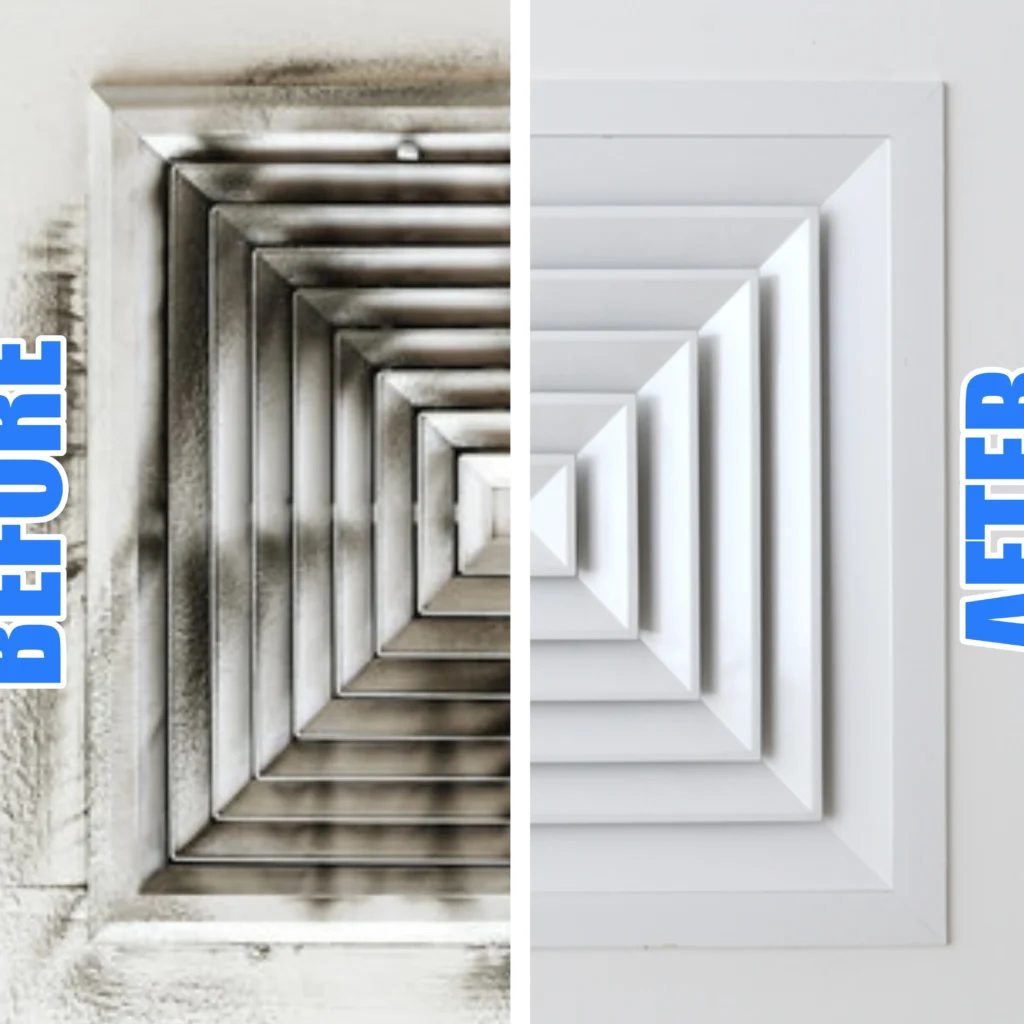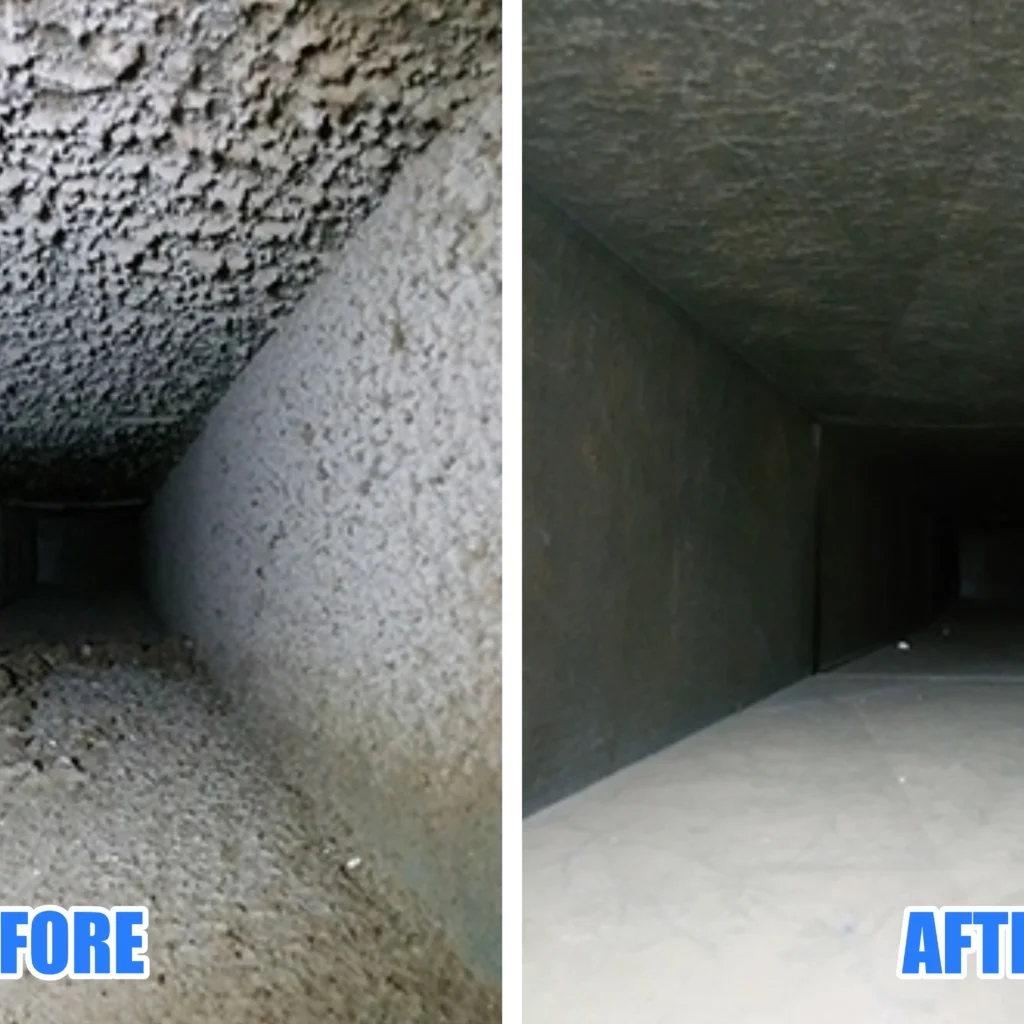In rental properties across the U.S., particularly in humid states like Florida, one common but often overlooked question is:
“Who is responsible for duct cleaning—landlord or tenant?”
Maintaining clean air ducts is crucial not only for the efficiency of HVAC systems but also for the indoor air quality and health of those living in the home. However, many lease agreements don’t clearly state whose responsibility it is, leading to disputes between tenants and landlords.
This blog will explore everything you need to know—from maintenance expectations and legal implications to tenant rights and real-life scenarios—so you’ll never be left guessing about duct cleaning responsibility in a rental property.
What Is Air Duct Cleaning and Why It Matters
Air duct cleaning involves the removal of dust, mold, pet dander, and other debris from the air duct system that circulates through your home.
Key Benefits of Duct Cleaning:
-
Improves indoor air quality
-
Boosts HVAC system efficiency
-
Reduces allergens and health risks
-
Eliminates musty odors
Did You Know?
Dirty ducts can reduce HVAC efficiency by up to 30% and aggravate allergies, asthma, and respiratory conditions—especially in humid environments like Florida.
When Should Ducts Be Cleaned?
| Condition | Cleaning Frequency |
|---|---|
| Regular Maintenance | Every 3–5 years |
| Pets in home | Every 2–3 years |
| Post-Renovation | Immediately |
| Mold or odor issues | As soon as detected |
Landlord Responsibilities
In most cases across the U.S., landlords are responsible for duct cleaning because it falls under general property maintenance and impacts tenant health and safety.
When Landlords Are Typically Responsible:
-
At the beginning of a new lease
-
After a renovation or property damage
-
If duct issues affect HVAC performance
-
If the lease assigns general maintenance to the landlord
Legal Insight (Florida Example):
According to Florida housing codes, landlords must ensure the property is “habitable,” which includes working HVAC systems and clean air circulation. If neglected ducts cause mold or poor air quality, the landlord may be legally liable.
Reasons for Landlord Responsibility:
-
HVAC system is landlord-owned property.
-
Maintenance is needed regardless of tenant actions.
-
Clean ducts contribute to property value and long-term appliance health.
-
Lease clauses often place general HVAC maintenance on the landlord.
Pro Tip: Landlords should schedule duct cleaning every 3–5 years or between tenant turnovers for both maintenance and liability protection.
Tenant Responsibilities
While tenants are not typically required to pay for duct cleaning, they do have responsibilities for day-to-day HVAC upkeep and reporting issues promptly.
When Tenants Might Be Responsible:
-
If tenant behavior caused contamination (e.g., smoking, pets, excessive dust)
-
If the lease specifically requires duct upkeep
-
If tenant requests cleaning outside of routine schedule
Tenant Duties (Non-Negotiable):
-
Replace air filters regularly
-
Keep vents unblocked
-
Report HVAC issues quickly
-
Avoid actions that cause contamination (smoking indoors, excessive clutter)
Tenant Rights & Lease Agreements:
If the lease is silent on duct cleaning, courts usually side with the landlord being responsible—unless tenant negligence is proven.
Summary Table: Who’s Responsible?
| Scenario | Responsible Party |
|---|---|
| Routine cleaning (every 3–5 years) | Landlord |
| Cleaning after tenant causes issue (e.g., smoking, pet dander) | Tenant |
| Beginning of new lease | Landlord |
| Tenant requests early cleaning | Tenant (if outside standard maintenance) |
| Health-related complaints (e.g., allergies, mold) | Landlord (usually) |
Lease Agreement Considerations
The lease agreement is the single most important document when determining who is responsible for duct cleaning in a rental property.
🔍 What to Look for in Your Lease:
-
Maintenance Clause – Look for language like “landlord responsible for general HVAC maintenance.”
-
Air Quality or Duct Clause – If specified, this can clearly define responsibility.
-
Custom Addendums – Sometimes air duct cleaning is included as a seasonal clause or post-renovation condition.
What If the Lease Doesn’t Mention Duct Cleaning?
In most cases, if duct cleaning is not mentioned, it defaults to the landlord’s responsibility—especially in the U.S.—unless:
-
The tenant caused unusual dirt, smoke, or pet-related contamination.
-
The tenant requests cleaning outside of standard intervals (e.g., before moving out without a valid cause).
Landlord Tip: Add a “Duct Maintenance Clause” to your leases to prevent misunderstandings and set service timelines.
Sample Clause:
“The landlord shall be responsible for duct and HVAC system maintenance every 3 years or as required by property conditions. Tenant is responsible for changing air filters monthly and keeping vents unobstructed.”
Health Implications of Dirty Air Ducts
Dirty air ducts can significantly impact indoor air quality, especially for families, elderly individuals, or tenants with respiratory conditions.
Health Risks Include:
-
Worsening of asthma and allergies
-
Respiratory irritation from mold spores
-
Increased dust mites and airborne pathogens
-
Headaches and chronic fatigue due to poor ventilation
Real Health Data:
| Pollutant | Source | Health Effect |
|---|---|---|
| Mold Spores | Damp ducts | Asthma, sinus issues |
| Dust Mites | Dirty vents | Sneezing, rashes |
| Pet Dander | Residue in ducts | Itchy eyes, coughing |
| VOCs (from past tenants) | Paints, chemicals | Headaches, nausea |
Pro Tip for Landlords: Clean ducts between tenants to reduce liability in case of future health complaints or lawsuits.
Cost Implications
Who Pays?
Depending on the lease and the state, duct cleaning costs may fall on either party, but typically:
| Cleaning Scenario | Average Cost | Who Pays |
|---|---|---|
| Routine duct cleaning (every 3–5 years) | $300 – $500 | Landlord |
| After pet contamination or smoking | $350 – $600 | Tenant |
| Emergency HVAC blockage | $400 – $700 | Shared / based on cause |
| Requested early cleaning by tenant | $250 – $400 | Tenant |
Value for Landlords:
-
Protects HVAC system lifespan
-
Avoids tenant turnover due to poor air quality
-
Reduces legal exposure
Value for Tenants:
-
Better health and comfort
-
Cleaner living environment
-
Peace of mind if allergies or children are involved
Legal Perspectives (U.S. and Florida Focus)
🇺🇸 Federal & State Law:
There is no federal law requiring landlords to clean ducts, but many states enforce habitability standards.
In Florida:
-
Landlords must maintain HVAC systems in working, safe condition
-
Mold and allergen risks fall under health complaints
-
Failure to address can result in:
-
Tenant withholding rent
-
Legal liability for illness
-
Fines in extreme cases
-
Tenant Legal Rights:
-
Right to a “habitable living environment”
-
Right to file a complaint for unresolved air quality issues
-
In some counties, right to request an inspection if air quality is affecting health
✅ Best Practice: Always document maintenance with before-and-after photos and keep a copy of professional invoices to prevent disputes.
Best Practices for Landlords & Tenants
Clear communication and well-documented expectations go a long way in preventing disputes over duct cleaning responsibility in rental properties.
For Landlords:
-
Include a duct cleaning clause in all lease agreements.
-
Schedule duct cleaning between tenants or every 3–5 years.
-
Maintain before-and-after cleaning records for legal protection.
-
Respond to tenant complaints related to air quality promptly.
-
Bundle HVAC system maintenance into routine property checkups.
For Tenants:
-
Read your lease carefully for maintenance responsibilities.
-
Replace HVAC filters monthly unless instructed otherwise.
-
Avoid behaviors that contaminate ducts (smoking indoors, excessive dust, etc.).
-
Report airflow or air quality issues as soon as possible.
-
If needed, request cleaning and offer to share costs when outside of standard schedule.
Frequently Asked Questions (FAQs)
How often should air ducts be cleaned in rental properties?
Most professionals recommend every 3–5 years, or sooner if there are pets, smokers, or visible dust/mold issues.
Can a tenant request air duct cleaning from a landlord?
Yes, tenants can request it. If the request is reasonable (due to health, odors, or allergens), many landlords will comply or split costs.
Is the landlord legally required to clean air ducts?
There is no federal mandate, but landlords are legally required to provide a habitable living space. If dirty ducts affect HVAC function or health, they may be held liable—especially under Florida state law.
What if the lease doesn’t mention duct cleaning?
Then it’s generally assumed the landlord handles major HVAC and duct-related maintenance, unless the tenant causes unusual contamination.
Are there health risks with dirty air ducts?
Yes—especially for people with allergies, asthma, or respiratory issues. Dust, mold, pet dander, and other pollutants often hide in unmaintained ducts.
Can tenants withhold rent due to duct issues?
In some states like Florida, tenants may withhold rent if a landlord refuses to address major maintenance that affects habitability—including serious air quality issues.
[wptb id=1963]
Final Thoughts
Determining who pays for air duct cleaning in a rental depends on the lease, the condition of the ducts, and whether health or performance issues are involved. In general:
-
Landlords are responsible for routine and safety-based duct cleaning.
-
Tenants take responsibility when their actions lead to contamination or when cleaning is requested outside of normal maintenance.
The best way to avoid disputes? Put it in writing. A well-worded lease and open communication can make all the difference in keeping homes clean, air breathable, and both parties happy.




Pingback: Is It Worth It to Get Your Air Ducts Cleaned? - Dude Cleaners